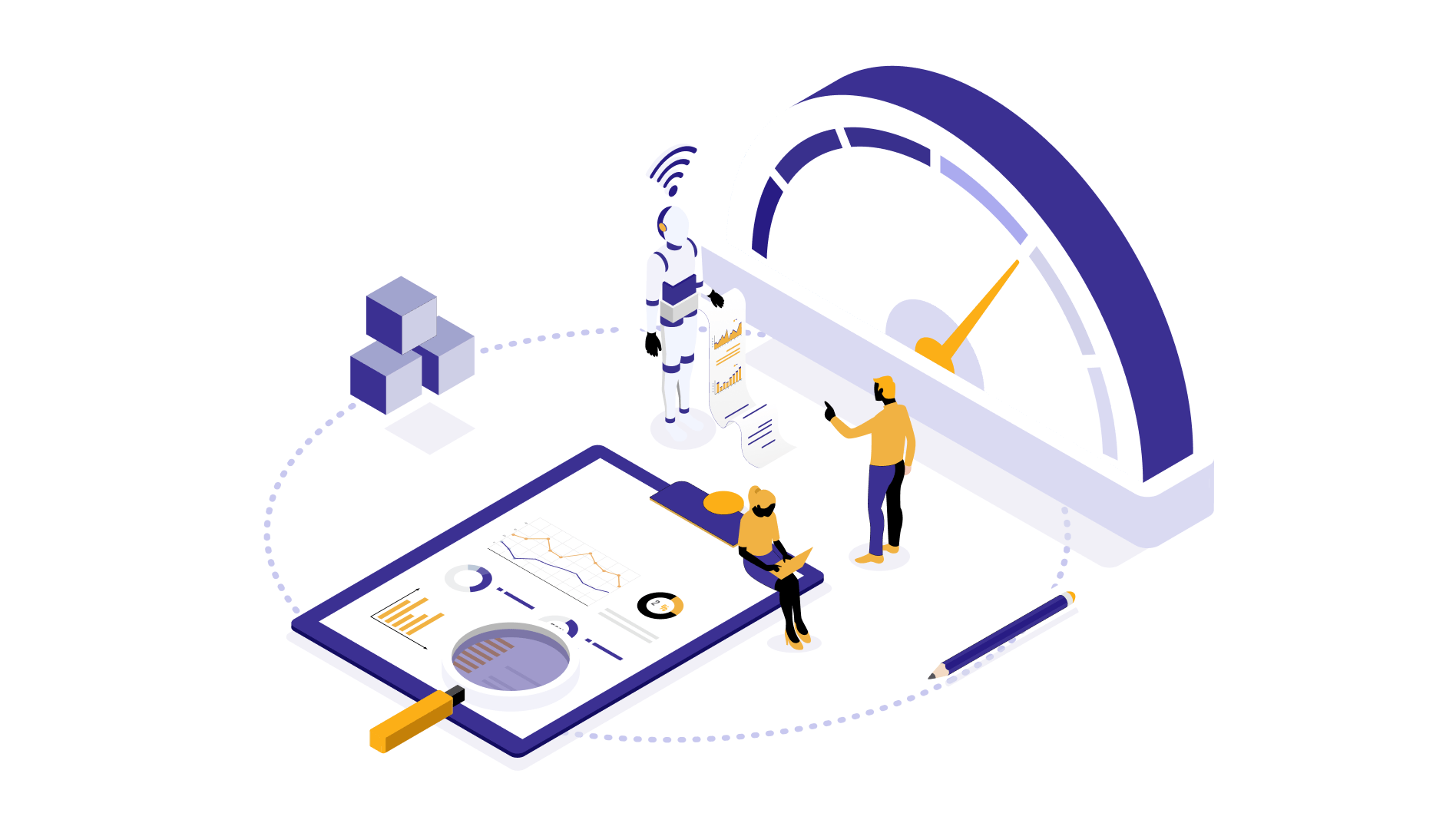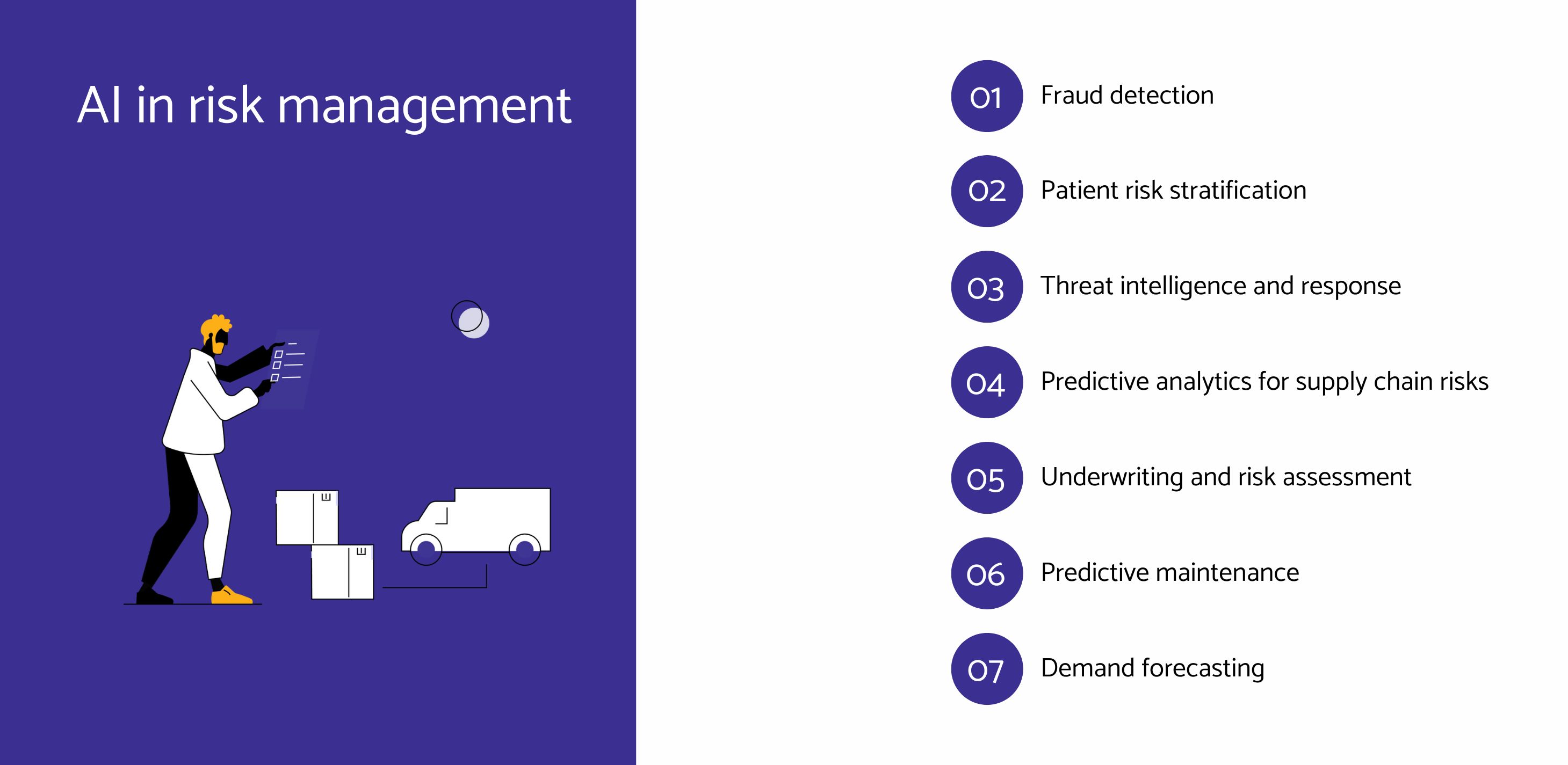AI in risk management: Benefits and use cases
How artificial intelligence functions as a watchful investigator, proactively recognizing, evaluating, and addressing risks in real-time, which improves resilience and decision-making.

Apoorva
Dec 17, 2025 |
7 mins

Read the full article to know how AI use cases in finance is becoming the game changer in the realm of risk management.
The need for AI in risk management
The complexity and interconnectivity of the business environment make it difficult for traditional risk management techniques to handle the sheer number and variety of hazards. This is where AI’s significance resides, as it can process enormous volumes of data at previously unheard-of speeds. Artificial intelligence (AI) systems can spot patterns, correlations, and abnormalities that might go unnoticed by humans, giving rise to a more thorough knowledge of possible dangers.

Utilizing AI in risk mitigation: Practical implementations
Next, we’ll explore the interactive realm of AI and ML applications, unraveling real-world use cases across diverse sectors.
1. Fraud detection
In the fast-paced world of finance transactions, AI and ML can play a pivotal role in spotting fraudulent activity. In real-time, sophisticated computers examine transaction patterns, spot anomalies, and highlight questionable activity. This guarantees consumer account security in addition to protecting financial institutions.
Learn more: Decision making with AI
2. Patient risk stratification
The healthcare industry can use AI and ML algorithms to evaluate patient data and forecast and categorize risks related to different medical diseases. This makes it possible for medical professionals to tailor treatment programs and respond proactively, which enhances patient outcomes and becomes life-saving.
3. Threat intelligence and response
The ever-evolving landscape of cyber threats demands a prompt and proactive approach. Algorithms based on AI and ML examine network behavior, spot any dangers, and facilitate quick action. This adaptive defensive system is crucial for protecting private information and averting cyberattacks in a variety of sectors.
4. Predictive analytics for supply chain risks
Organizations can anticipate and reduce supply chain risks with the help of AI and ML. These technologies can forecast interruptions, optimize inventory levels, and improve the overall resilience of the supply chain by evaluating past data. This is especially important for businesses where disturbances in the supply chain can have a cascading effect.
5. Underwriting and risk assessment
AI and ML streamline the underwriting process by analyzing vast datasets to assess risk accurately. These technologies assess a wide range of variables, such as historical data and demographic information, giving insurers a more thorough understanding of risk profiles through AI risk profiling and facilitating data-driven decision-making.
6. Predictive maintenance
Predictive maintenance is a crucial use case in the manufacturing process, which lowers downtime and boosts productivity using AI and ML. By analyzing sensor data from machinery, these technologies anticipate equipment breakdowns before they happen, enabling prompt repair and averting expensive production delays.
7. Demand forecasting
The retail industry can thrive better with demand forecasting based on AI and ML. These tools generate precise forecasts by evaluating market trends, consumer behavior, and past sales data. This helps merchants to effectively satisfy customer demand, minimize overstock, and optimize inventory levels.
Learn more: AI use cases for Media
Why AI for risk management?
The conventional approach to risk management involves identifying, evaluating, and ranking potential risks, and then allocating resources to reduce their impact. By protecting organizations from possible dangers, this proactive strategy ensures resilience and sustainability. In the earlier days, risk management relied on manual analysis and historical data, which made it complicated and resource-intensive.
AI improves operations by anticipating demand, averting malfunctions, and improving decision-making through customer insights in industries including e-commerce, manufacturing, and retail.
When it comes to risk management, artificial intelligence takes a proactive approach, constantly observing data streams, utilizing predictive analytics, and creating scenarios.
Final thoughts
As we traverse the diverse applications of AI and ML in risk management, it becomes evident that these technologies are not mere tools but strategic assets. Organizations can overcome uncertainty, make well-informed decisions, and maintain an advantage in a constantly changing environment because of the interactive capabilities of AI and ML.
However, knowing how to create an AI strategy is what truly differentiates organizations that experiment with AI from those that master it. A well-defined AI strategy aligns technology adoption with business goals — identifying key risk areas, selecting the right data models, and integrating them seamlessly into existing workflows.
The application of AI and ML in risk management is changing sectors, ensuring they stay flexible and robust in the face of difficulties, from manufacturing to healthcare, banking to cybersecurity. The journey has just begun, and the possibilities are limitless as we continue to unlock the true potential of AI and ML in mitigating risks across sectors.

by Apoorva
Apoorva, ex data scientist at datakulture, worked closely with the data science team—supporting research, data exploration, training, and model-building activities. With a strong blend of analytical, creative, and communication skills, she loved spreading knowledge through engaging audiences in events, writing blogs and technical papers, and participation in platforms like Medium.



